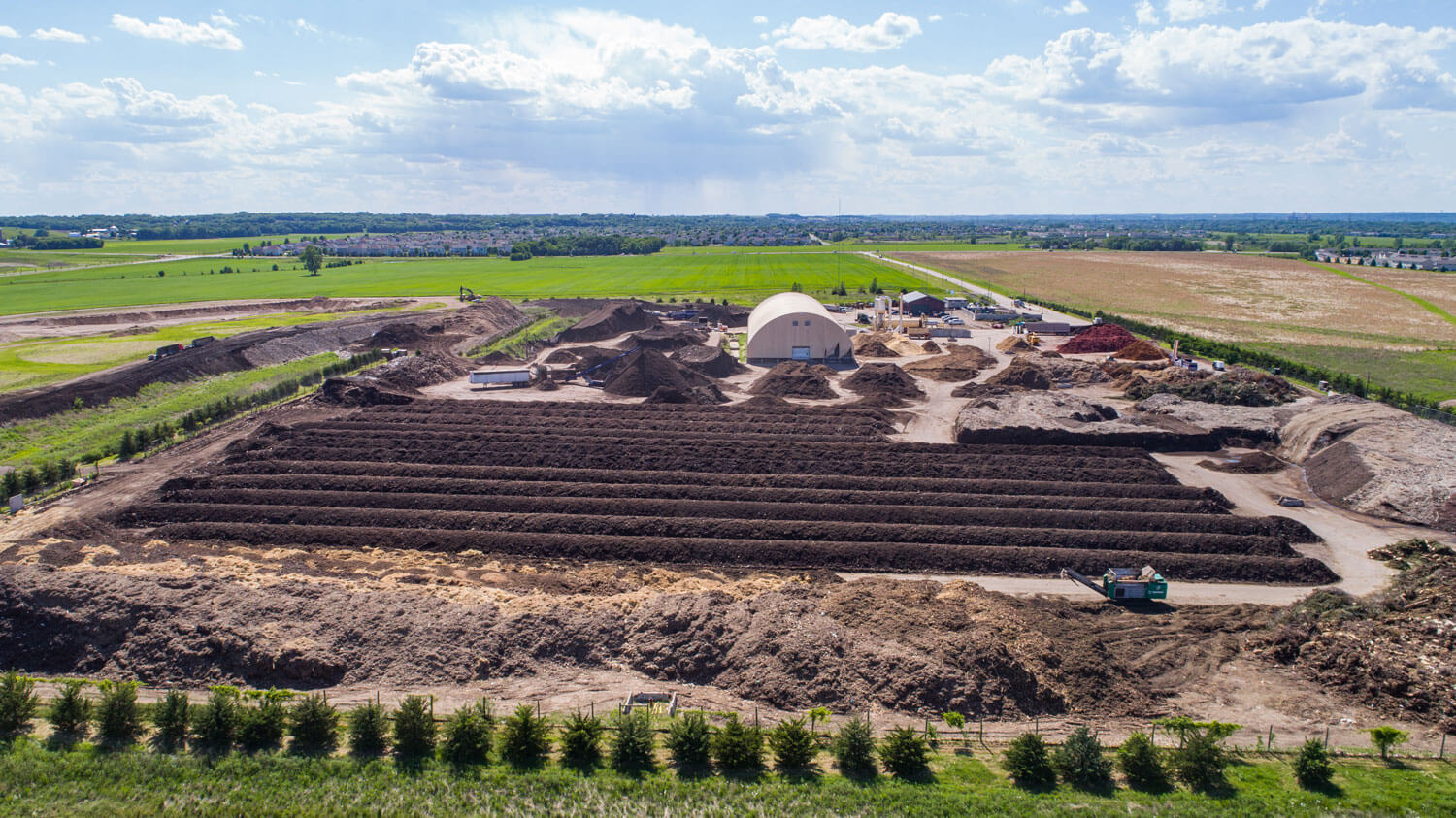
The SMSC is building the largest organics recycling facility in the Midwest
As construction on the Dakota Prairie Composting site ramps up into spring, the current organics recycling facility continues to offer all services and products our customers have come to expect and enjoy. The huge undertaking of a new facility—set to be the largest facility in the Midwest, measured by tons of organic material composted annually—has us reminiscing about where it all began. When the SMSC Public Works Department started composting yard waste in early 2004, they couldn’t have imagined where it would lead: innovation and a standard of excellence led by a team of experts in the field.
The History of Composting
Composting is not a new practice. The roots of composting can be traced back to ancient civilizations where agricultural societies recognized the value of decomposed organic matter in enriching soil. However, it was in the early 20th century that the idea of large-scale composting for waste management began to take root. As the quest for sustainable living and environmental responsibility moves to the forefront of best practice, composting has emerged as a cornerstone of waste management. Home composting has gained popularity, but industrial composting represents a significant evolution in the way we handle organic waste on a larger scale.
The Early Years
Original composting machinery attempted to sort organics from municipal solid waste (MSW), which didn’t provide a clean or sustainable product. The contamination, odor, pests, and advanced sorting required of MSW made it a long process that wasn’t producing high quality compost. The 1970s marked a turning point with the emergence of regulated municipal composting programs, driven by the growing awareness of environmental issues and the need for sustainable waste management solutions. The U.S. Environmental Protection Agency (EPA) played a crucial role in promoting composting as an effective means of managing waste. The EPA’s support and guidelines paved the way for the establishment of composting facilities across the country.
The 21st Century
As the environmental movement gained momentum in the late 20th century, industrial composting began to gain prominence. This marked a shift toward large-scale facilities capable of processing significant volumes of source-separated organic waste. In recent years, technological advancements have propelled industrial composting into a new era. From state-of-the-art composting machinery to innovations in waste separation and collection, the industry continues to evolve.
The regulations and certifications have also improved and keep the hundreds of organics recycling facilities in the United States providing high quality compost for residential and commercial use. The STA program, developed by the United States Composting Council, helped standardize compost quality testing across the country, giving customers confidence in the compost they are purchasing. The SMSC Organics Recycling Facility (ORF) uses the windrow composting method and has a capacity of 70,000 tons a year. The new Dakota Prairie Composting location will use the aerated static pile (ASP) method of composting and have a capacity of 212,500 tons a year.
SMSC Composting History
Public Works started composting yard waste for SMSC Members in early 2004 at the Public Works building site. When construction for the Public Works building started, the compost site moved to the north side of County Road 42 across from Wozupi Tribal Gardens. Soon after the move, the site was opened to Prior Lake, Savage, and Shakopee residents as well. In 2006, the site had only three employees and its management was turned over to the Land Department.
In 2011, the operation was moved to its current location on Mystic Lake Drive and the SMSC decided to invest in and expand the operation in the name of sustainability and start accepting food waste as well. The ORF quickly grew and reached capacity in just a few years.
Key Dates in ORF History:
- 2012: A wood drying facility was added with the wood being sold to Koda Energy to be burned for electricity.
- 2016: Plans to expand began with a land search for a new facility. Finding a site in the county with the correct zoning and site conditions proved difficult.
- 2019: The wood dryer was decommissioned and sold, which allowed the ORF to convert their wood waste into a colored mulch business.
- 2020: Land was purchased for the new facility, but the project was put on hold due to a global pandemic.
- 2023: The SMSC broke ground on the new facility, now named Dakota Prairie Composting, committing to a sustainable practice of waste management.
- 2024: Construction continues with a projected opening date of September 2024.
What’s Next?
The history of industrial composting is a testament to human ingenuity in addressing environmental challenges. From humble beginnings rooted in ancient agricultural practices to the sophisticated facilities of today, industrial composting has come a long way. As we stand on the cusp of a greener future, the lessons learned from history will undoubtedly guide us toward more sustainable waste management practices.


